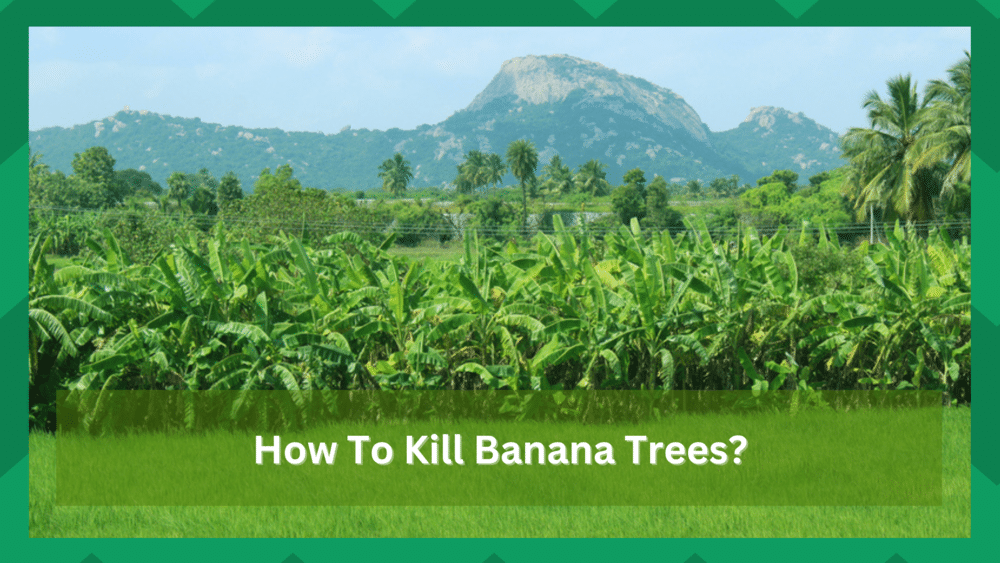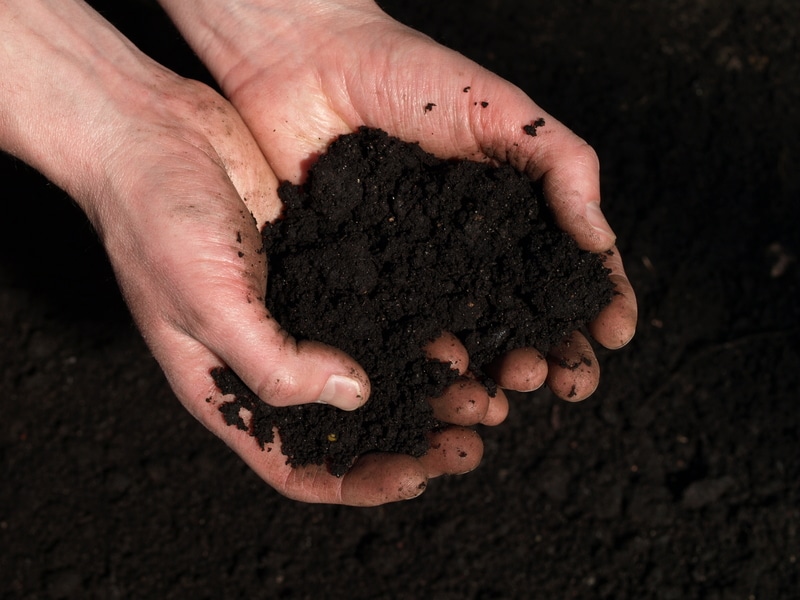
Bananas are pretty great and usually grow on trees in bunches. While it is a good option to have banana trees in your garden or the farm, you need to know that they suck a large amount of water from the soil, and that can be dangerous for the other plants if you have them around.
That is why you might need to kill some banana trees you planted in your garden. To make sure that you can do it right, there are a few options that you can use. Here are all of them.
How To Kill Banana Trees: Is It Possible?
- Digging it Out
First, the most common and easiest way is to dig it out. You will need to cut the banana tree closer to the soil. After that, you must ensure that you dig out all the roots. Make sure to remove the suckers around the roots as well. You need to be careful about all these roots and ensure you are not leaving any of them behind, as they might grow into a new tree.
This practice is very common and efficient as digging; you can prepare the soil for any other plant or tree you might plan on growing instead of the banana tree you have just killed. However, this technique is not suitable if you are in a hurry.
- Chemical Herbicide
There are several chemical herbicides that you can get from the market, and they are easy to get your hands on and use. So, if you are planning on using one, all you need to do is make sure that you are getting a chemical herbicide that would be effective for bananas.
Each of these herbicides has a different application process. This is mentioned in complete detail on the box that you’ll buy.
Just follow the process written on it completely. Also, ensure that you apply the herbicide correctly to get it sorted out. That will help you greatly, and you will eliminate the banana tree without effort. The tree will die independently, and you can also eliminate the debris.
- Kerosine Oil
Another way to kill the roots and suckers is to ensure you are cutting a stalk. Then, fill it with kerosene oil. It is easy and simple. All you will need to do is cut the upper part of the banana tree. Then, remove all the debris from the ground.
Then you will have to fill up the remaining stalk with kerosene oil. Doing so will automatically kill all the roots for you. This method will help you avoid all the digging and the hard work involved.
Additionally, you will not have to worry about a single thing afterward. This could be the best way to get things sorted out for you. This is especially true if you want to avoid getting involved with the digging.
- Glyphosate
Banana trees are popular for home and commercial landscapes, providing lush foliage and sweet fruits. Unfortunately, there may come a time when you need to get rid of one or more banana trees.
Killing banana trees is not as easy as it sounds; they have an extensive root system that can regrow if left in the ground after cutting down the trunk.
The most effective way to kill a banana tree is glyphosate, an herbicide that targets broadleaf plants like bananas.
When used correctly, glyphosate will eliminate existing banana trees without harming other plants. Here’s how to use this powerful herbicide to kill your unwanted banana tree(s).
Prepare the Area: Before applying glyphosate to your banana trees, you must prepare the area for treatment. Start by removing any debris near the tree(s). This includes grass, weeds, mulch, and other organic materials near the tree trunk’s base.
Apply Glyphosate: Once the area is clear, you can apply glyphosate. The herbicide should be mixed according to the instructions on the packaging and applied directly to each banana tree’s leaves, stems, and roots. Make sure to thoroughly coat all surfaces of the trees with a generous amount of herbicide.
Wait for Results: After applying the glyphosate, you must wait. The exact duration will depend on the amount of herbicide used, but generally, it will take about one to two weeks for the tree(s) to die completely. During this time, you should monitor the area and check for any regrowth or signs of life from the bananas.
Dispose of Remains: After the banana tree(s) have died, you can remove them from the area. Wear gloves and protective clothing when handling dead plants, as the herbicide may still be on their surface. Once the trees are removed, dispose of them according to local regulations for hazardous materials.
Replant: Once the dead banana trees have been removed, you can begin to replant the area with something more desirable. Consider planting a new tree or flowers to provide an aesthetically pleasing landscape for your home or business.
- Triclopyr
When using triclopyr on banana trees (or any other plant), certain precautions must be taken for it to work correctly and safely. This article will discuss these precautions and how you can use triclopyr effectively on banana trees in your garden.
Triclopyr is an herbicide used for a variety of different purposes. When used correctly, it can be very effective at killing unwanted plants such as banana trees. However, if not used properly, triclopyr can significantly negatively impact the environment and human health.
When using triclopyr, it’s important to remember a few key tips. First, always read and follow the instructions on the product label. This is especially important when using triclopyr on banana trees as it may require different application methods than other plants.
It’s also important to take extra precautions when spraying triclopyr around children and pets. Ensure you keep them away from the area for a few days after application, as triclopyr can be absorbed through the skin and inhaled.
When spraying triclopyr on banana trees, it’s best to spray in the late summer or early fall, just before leaves appear. This ensures that the triclopyr can reach all parts of the tree, including its roots.
By following these steps and using triclopyr as directed, you can effectively kill banana trees in your garden without causing any harm to the environment or people around you. Doing so will also help keep your garden looking neat and tidy.
If you’re having trouble killing banana trees in your garden, it may be best to consult a professional. A certified arborist can help diagnose the problem and advise on treating it effectively.
What to keep in mind when getting rid of a Banana Tree?
Banana trees are a popular ornamental plant, but they can quickly become overgrown and unruly. If you’re looking to get rid of your banana tree, there are several things to keep in mind.
It’s important to understand that although the trunk may appear dead or dying, the roots will continue to grow and spread unless they are properly removed from the soil. Therefore, if you plan on reusing the soil for other purposes, ensure all root systems are completely extracted.
However, if you decide to compost your banana tree debris rather than tossing it out with your household garbage, then be aware that banana trees can sometimes contain nematodes which could survive in your compost pile and potentially infect other plants down the road.
To avoid this problem, discard your banana tree material from where other plants might be growing.
When disposing of large-scale banana trees, such as those found in commercial production settings or public spaces like parks or gardens, it is best practice to call upon professional arborists who have experience working with these types of plants safely and efficiently.
Concluding Thoughts
Banana trees can be attractive to any garden, but they must be managed correctly. If you find that your banana tree is becoming a problem, there are several steps you can take to get it under control.
Different methods of dealing with a banana tree can be used depending on the severity of the issue and your personal preferences, from manual removal and composting to chemical applications like triclopyr.
Always take precautions when using pesticides, and never hesitate to call in a professional if you feel the job is beyond your capabilities. With some simple maintenance and planning, you can keep your banana tree under control for years to come.



